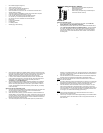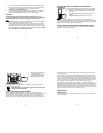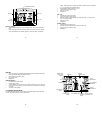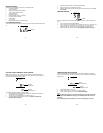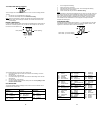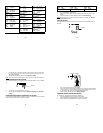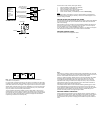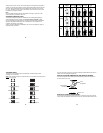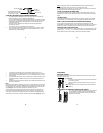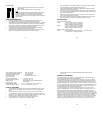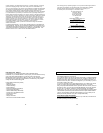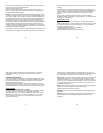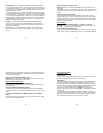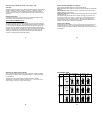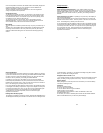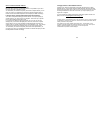
65
Sensor and Channel Number Indicator
Confirming the Unit is Reading Your Sensor
Because of the popularity of our Weather Stations, it is possible for your unit to
pick up a signal from a neighbor’s sensor.
To confirm that your sensor is the primary sensor after a Proper Restart, you can
place your sensor in a refrigerator or freezer and recheck the display after 30
minutes to see if the outdoor temperature on the display has fallen accordingly.
I Have One Sensor. Why Does My Station Indicate Three Sensors?
Your station is capable of reading up to three sensors. You may be picking up
another sensor in your home or from your neighbor. There is no way to prevent
this unit from reading sensors within range.
If your base unit is reading a sensor other than your own, and you want the
readings from your sensor to be displayed on Channel 1, there are a couple of
steps to follow. First you must complete a Proper Restart with the indoor and
outdoor units in a “remote” location such as in your basement or car. This will help
avoid having another sensor registering with your unit as the primary sensor.
To confirm that your sensor is the primary sensor after the Proper Restart, you
may place your sensor in a refrigerator or freezer and recheck the display to see if
the temperature has fallen accordingly.
66
Changing Channels to Read Additional Sensors
Press the CH/+ button to temperature and humidity records from up to three
different sensors. The channel number is displayed directly above the humidity
reading in the lower right corner of the unit. If you have only one sensor and are
receiving information from more than one sensor, you may be picking up the
signal from a neighbor.
If you are still having problems after following these steps, please contact us at
(888) 211-1923 or support@lacrossetechnology.com
.
All rights reserved. This handbook must not be reproduced in any form, even in excerpts,
or duplicated or processed using electronic, mechanical or chemical procedures without
written permission of the publisher.
This handbook may contain mistakes and printing errors. The information in this
handbook is regularly checked and corrections made in the next issue. We accept no
liability for technical mistakes or printing errors, or their consequences.
All trademarks and patents are acknowledged.



